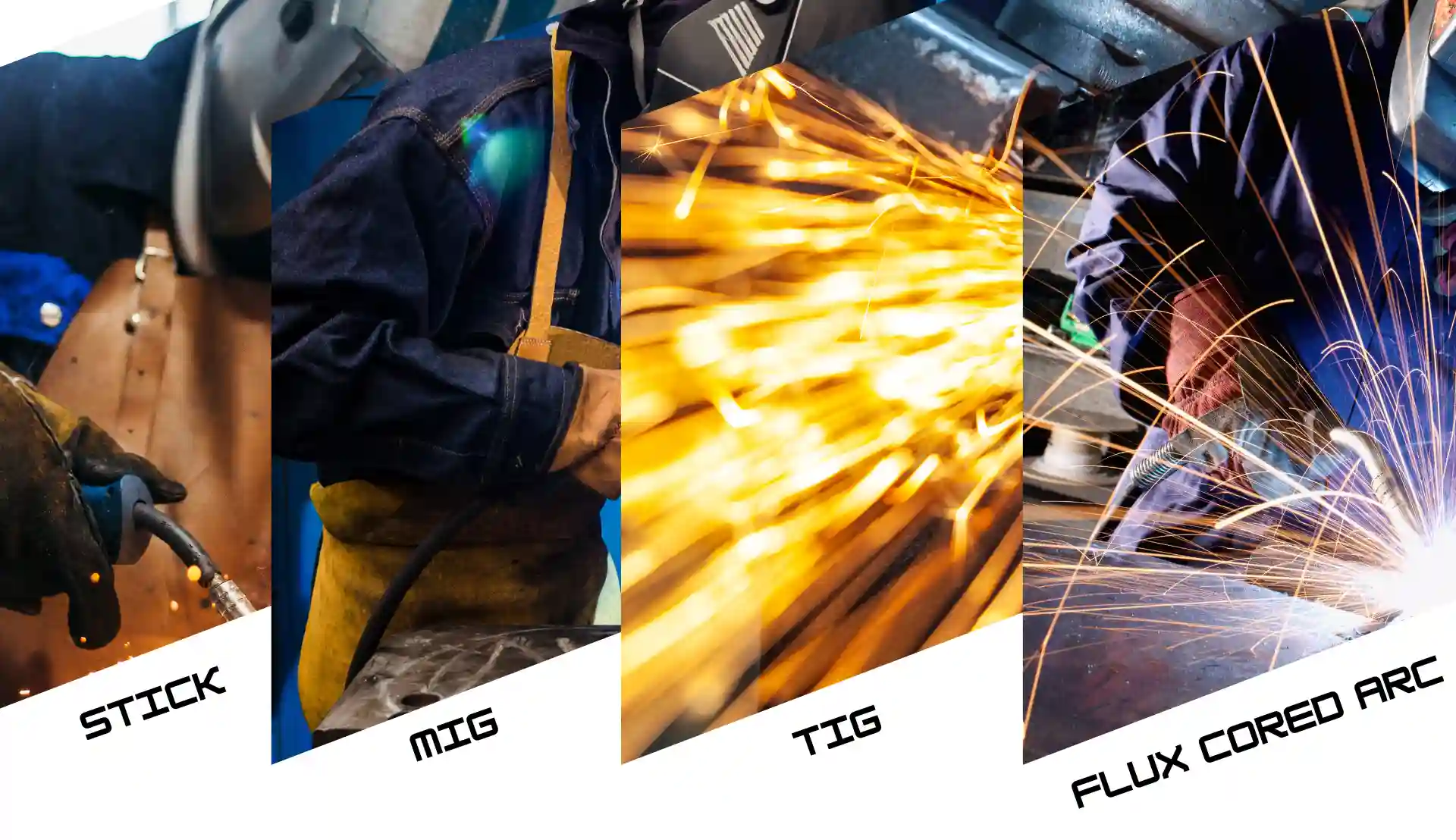
Welding is the process of joining two pieces of thermoplastics or metal together. The process involves extreme heat, and in other circumstances, it involves the addition of gases or metal for the two pieces to form a joint. The welding process has tremendously evolved over the years, attributed to the advent of new and ever-changing technology.
It is vital to understand the different types of welding processes to choose the best method suitable for the task at hand. Four popular welding processes are often used: stick welding, MIG welding, TIG welding, and flux-cored arc welding.
Types of Welding Processes:
1) Stick Welding
Stick welding is also known as Shielded Metal Arc Welding (SMAW), and this is the most popular method used in the arc welding process. The most commonly used metals in stick welding are stainless steel and steel. This process uses flux–coated electrodes to form a weld. This is made possible by current passing through the welding rods, and as the electrode begins to melt, thus creating a cloud of gases that shields the molten metal from oxidation.
Many people view the stick welding process as straightforward because it doesn't necessitate specialized equipment. Several advantages are associated with stick welding, such as the equipment used in stick welding is often considered easy to use and less expensive, the method can be used to weld a wide range of alloys and metals, and the electrodes can easily be changed to fit different types of metals.
2) MIG Welding
MIG welding is another popular welding process known as Gas Metal Arc Welding (GMAW). This process uses electrical power to melt the electrode, a shielding gas derived from an external supply source to deposit molten material on the welding joint. MIG welding is often used in several different types of metals. The successful application of the welding process often depends on some factors, such as composition, packaging, and diameter of the electrode.
When it comes to welding, the method used depends on various factors, such as the purity, flow rate, and composition of the shielding gas and the equipment utilized during the process. Some advantages are also associated with the use of the MIG welding process. The welding process can be done on all commercial types of alloys and metals. The metal deposition rate and welding speeds are higher than stick welding. The welding process can also be done in different positions as long as a proper selection of the parameters and equipment is required.
3) TIG Welding
TIG welding is also known as Gas Tungsten Arc Welding (GTAW), which often involves using a non-consumable tungsten electrode to heat different types of materials to form a weld. Since no filler metal is required in the welding process, the weld is ideal for welding a single type of metal.
This process often requires a lot of professional skills. The gases used in the TIG welding process often include argon and helium. Different points of interest are associated with TIG welders, such as producing high-purity and high-quality welds compared to other welding processes. TIG welding is also deemed less expensive; however, costs often vary depending on the material being welded.
4) Flux Cored Arc Welding
Flux-cored arc welding is another process that uses an electric arc to form a continuous filler metal electrode with a base material. The process often uses a tubular wire fed with flux that melts during the welding process to shield the area covered and welded from being affected by gases available in the atmosphere.
This flux core welding machine is used on thicker and heavier metals. Since the process produces high amounts of heat, working with metals that can stand high amounts of heat is essential. Therefore, it is considered an ideal process for heavy machinery and repairs, steel erection, and construction. There are advantages associated with the process, such as the process does not require a lot of equipment, thus making it easier to move around during the welding process. No shielding gas is required, making it an ideal process for outdoor welding as it is not affected by weather elements such as wind.
Conclusion
To effectively execute the different welding processes, it is vital to know which type of metals you are dealing with to ensure that you carry out the welding task effectively and, simultaneously, that the joints made are strong enough to hold the two pieces together.
Leave a Reply